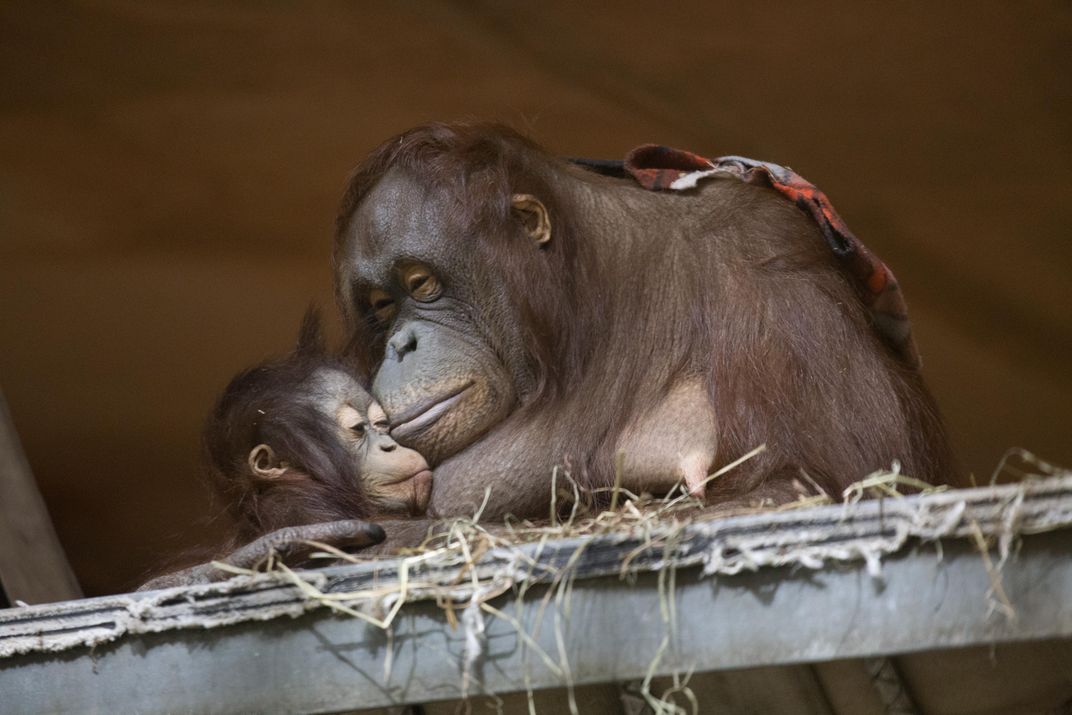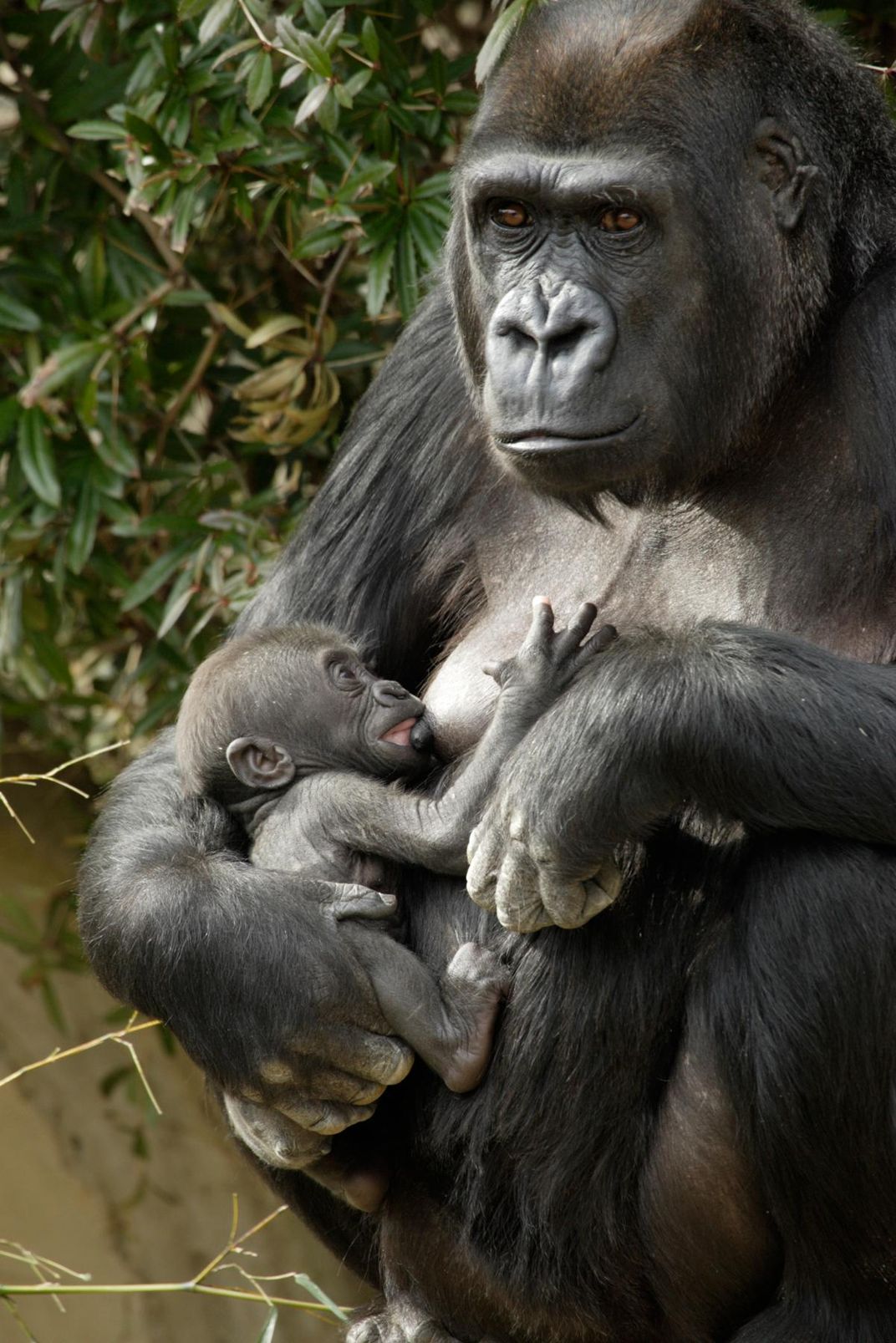What Aardvark Milk Reveals about the Evolution of Lactation
Samples from the Smithsonian National Zoo’s Exotic Animal Milk Repository help scientists study the unifying trait of all mammals
/https://tf-cmsv2-smithsonianmag-media.s3.amazonaws.com/filer/c9/42/c942f3dc-6d4d-4b57-9900-56524d842855/26705999098_e80f0cf942_b.jpg)
For decades, cow’s milk has reigned as America’s milk of choice. Even as alternative, plant-based milks made from almonds, soy or oats increasingly challenge the familiar frosted plastic jugs for space in refrigerators across the country, the bovine beverage remains ubiquitous—virtually everywhere, that is, except the Exotic Animal Milk Repository at the Smithsonian National Zoo's Conservation Biology Institute.
“I have 400 or 500 samples of gorilla and orangutan milk in my freezer right now,” Mike Power says, without a hint of irony. Power heads up the milk repository, an assortment of milk collected at zoos across the country from more than 180 different species of mammals, more samples from more species than anywhere else in the world. And the collection is growing quickly. Just ten years ago, Power says, the scientific community knew virtually nothing about ape milk, let alone the milk of dozens of other exotic mammals whose samples now dominate the repository freezer. The newest addition? Weekly samples from Ali the aardvark, a proud new mother at the Cincinnati Zoo and Botanical Garden.
The milk repository’s collection allows scientists to study the nutritional composition of various animal milks, in part so they can be closely replicated to feed babies whose mothers have died or are unable to adequately nurse. That practical application is important: scientists at the milk repository helped save Fiona the hippo’s life by determining the composition of her mother’s milk, which zookeepers couldn’t gather in large enough quantities to sustain the baby’s growth, when Fiona was born prematurely and couldn’t nurse on her own. That formula was then used to create a replacement milk for Fiona as she was hand-reared to health.
But what really excites Power is the milk repository’s potential to reveal similarities and evolutionary connections between mammals.
“Mammals are the largest group of animals that is characterized by a single thing, and that is that their females produce a substance from their own bodies to feed their babies,” Power says. “All of them came from the same original milk.”
Despite their common roots, milks can vary significantly across Mammalia, even between animals that seem alike. Take for example two large, aesthetically similar, habitat-sharing herbivores: the Asian elephant and the rhinoceros. While the Asian elephant’s milk is relatively high in fat with a low sugar content, Power describes rhinoceros milk as “sugar water with some protein added in,” with an almost undetectable fat content: of the ten gallons of milk a mother rhinoceros produces in a day, a little over nine of it is water. On the other end of the spectrum, there are milks from some marine mammals that contain more fat than water; big cats’ milk is about half protein. And while some milk changes drastically as the baby develops, other milk remains the same.

“What is always surprising is how variable milk can be,” Power says. “It’s always solving the same problem, and the problem is growing a baby.”
Perhaps even more surprising, then, is finding comparable milks from vastly different mammals. For example, the long-snouted aardvark’s milk is not much different from the milk of the fierce African lion. But what sounds shocking at first makes sense upon closer inspection: both carnivores and insectivores primarily eat protein, so it follows that their babies would thrive on protein-rich milk. In terms of its diet, Power says, the aardvark is “the poor man’s tiger.”
Aardvark milk is also very similar to giant anteater milk, which Power says is telling. There are three different species of anteater: the aardvark, the giant anteater and the pangolin. Once believed to be related, they’re now recognized as entirely separate evolutionary lineages. But if it turns out that pangolin milk is also a close match, it would be even more compelling evidence that there is a strong link between an animal’s diet and the milk it produces.
“It’s another piece of the puzzle,” Power says. “Here is a type of mammal that is specialized on a type of diet, and it looks like there are some good similarities in there.”
How do scientists get milk from an aardvark or an orangutan? Many aspects of exotic animal healthcare were once thought to require anesthesia, so milk samples were only taken when animals were undergoing an examination. But as zookeeping shifts away from the use of force and toward an approach that emphasizes collaboration between zookeepers and animals, positive reinforcement training is becoming the primary method of collecting milk and administering care.

“All of our positive reinforcement training is basically to have the animals participate voluntarily in their own healthcare,” says Erin Stromberg, a primate keeper at the National Zoo. “They’re incredibly intelligent animals, all of the primates, so they are very willing participants.”
Communicative animals like gorillas and orangutans learn to bare their chests when trainers give a certain hand signal. They earn peanuts or dilute juice from a squirt bottle when they comply but suffer no consequences when they refuse. When primates are pregnant, zookeepers train them to be comfortable with breast contact and diligently check for mastitis, an infection of the breast tissue that commonly affects breastfeeding females. By the time they give birth, most primates feel comfortable giving milk and even welcome the interaction. Trainers don’t enter the animals’ enclosures and only collect milk when approached, so the process is always voluntary—Mandara, an experienced mother gorilla at the National Zoo, used to jump down to greet trainers before her Wednesday morning milkings.
Hippos and aardvarks also give milk without being anesthetized. The care team at the Cincinnati Zoo spent so much time with Ali the aardvark and her baby, Winsol, that she seemed to not even notice being milked, and Fiona’s mother, Bibi, also voluntarily gave milk, according to a zoo press release.
“The advancement of what we’re able to do with these animals to allow them the choice to participate in these things makes it so much safer for the animal, and for us,” Stromberg says. “We’re working with the animal and not against it.”
That means more milk for the repository and a deeper understanding of how lactation evolves over time: across the development of one baby animal, and across the eons since the first mammal gave milk to feed her young.
“For me as a keeper it’s exciting to be part of an area of science that I wouldn’t normally be a part of,” Stromberg says. “It shows the fantastic collaboration between the people who work with the animals directly and the science questions that need to be asked.”
/https://tf-cmsv2-smithsonianmag-media.s3.amazonaws.com/accounts/headshot/2018-01-17_07.39.24_2.jpg)
/https://tf-cmsv2-smithsonianmag-media.s3.amazonaws.com/accounts/headshot/2018-01-17_07.39.24_2.jpg)